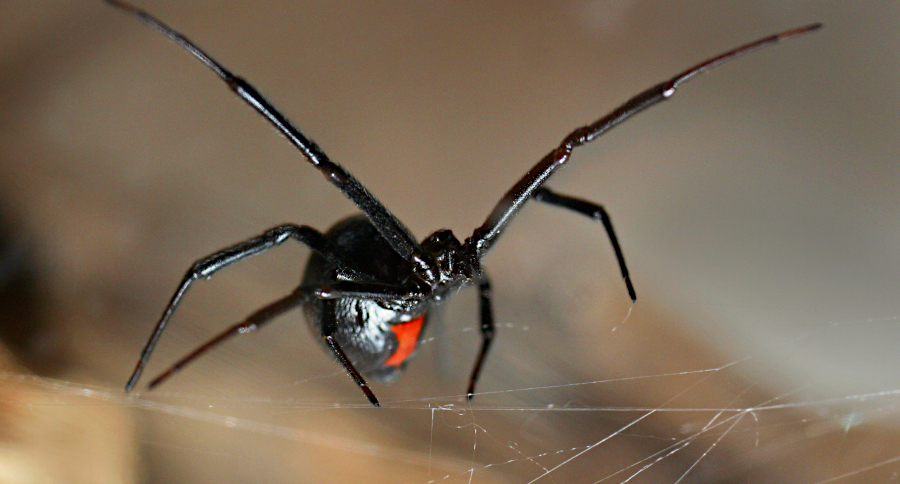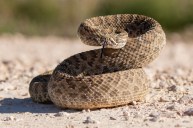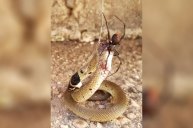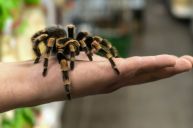These are the facts on one the most feared North American spider.
For many people, nothing makes their skin crawl quite like the thought of spiders. Their fear is often multiplied when one starts talking about venomous spiders like the brown recluse or the arachnid we will talk about today, the black widow spider.
This shy and reclusive creature has a habit of coming into conflict with humans on a consistent basis in some areas, making for good business for pest control companies. The spider's intimidating look with its red hourglass marking has given it a bad reputation. This has resulted in all sorts of myths rising about them, some of which have become popular belief further amplified through the Internet.
Today we will attempt to quell some of those rumors and give you some hard facts on this critter that you can use to avoid unwanted contact with them during your outdoor adventures.
The term "black widow" covers a few different varieties of spider.
Black widows are part of a larger family of spiders known as Latrodectus. The two most common names you will hear here in North America are the western black widow (Latrodectus Hesperus) and the "northern" black widow (Latrodectus various). There is also a southern black widow known as Latrodectus mactans in the scientific world. Of these many species, the western variety is the one most people know and fear. Two lesser-common varieties in the United States include the red widow (Latrodectus bishop) and the brown widow (Latrodectus geometricus).
Female black widow spiders are always nearly twice the size of the males, making them easy to spot. It is also that size that likely strikes fear in many people because larger female spiders can reach one half to a full inch in length. That is a big spider!
Just about every subspecies of widow spider has similar color variations. The male spiders generally go unnoticed because they are small and generally light brown in coloration. The adult females often have jet black or light brown bodies marked with bright red colorations. In the case of the western widow, the red hourglass shape on the abdomen is the dead giveaway to avoid this spider.
Some varieties, like the northern black widow may have red markings or white colorations on their legs as well. In the case of the red widow, the markings are more dots with yellow outlines. For basic safety, we recommend avoiding all spiders with spindly legs and red markings like this.
The range of black widows varies greatly.
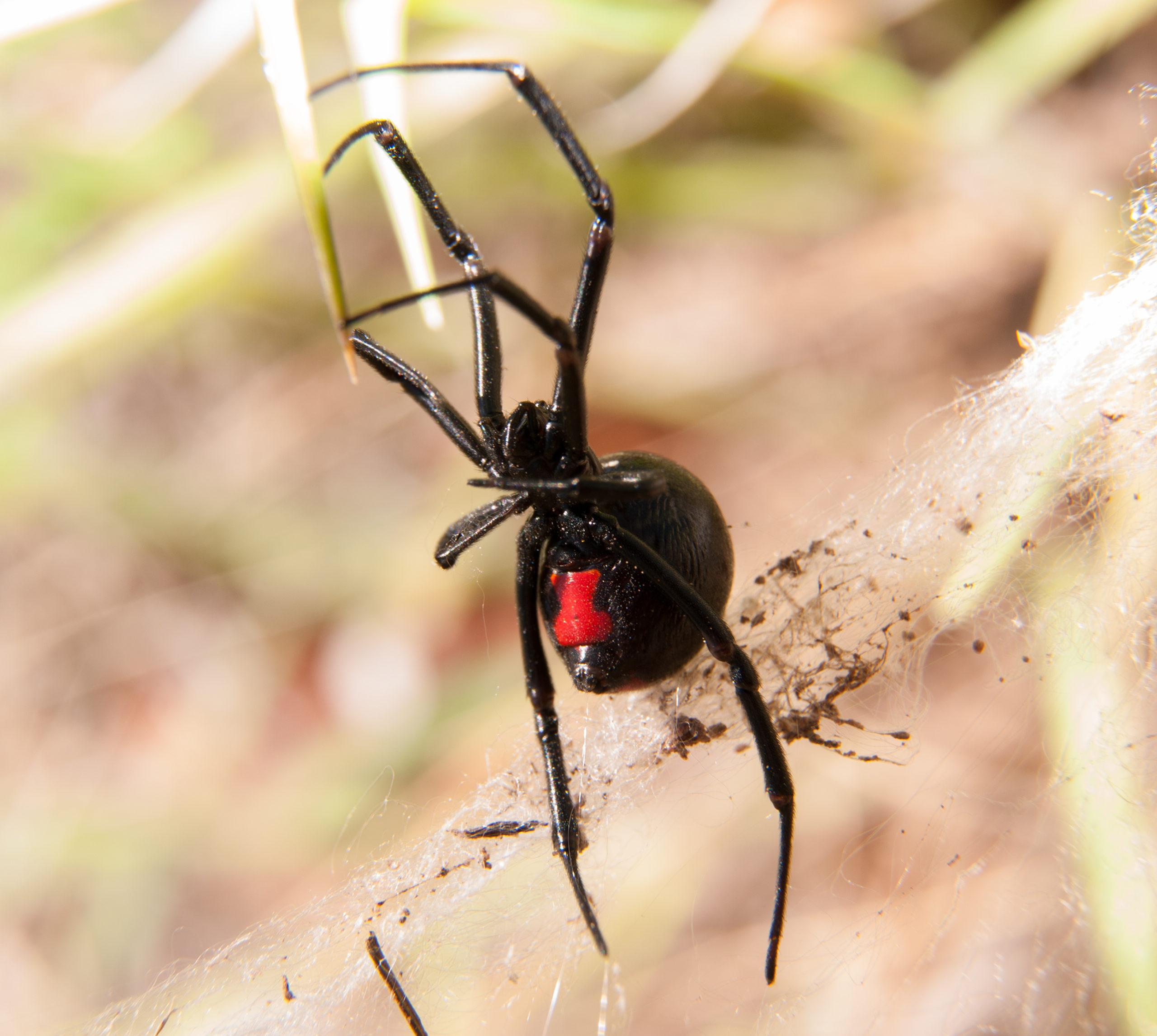
Some species we just mentioned like the red widow are sequestered to just select parts of Florida. The brown widow is thought to be from South Africa originally, but in the United States it has been found in Hawaii and parts of California. That species' range may be slowly expanding even though there is no proof of that yet.
Most people just want to know where the northern, southern, and western widow varieties live. After all, they are the scariest-looking ones of the bunch. The southern widow, as the name implies, is primarily found in the southern United States, although it can be found throughout New England and even into the southern parts of Canada.
The western widow is again, found mostly in western states. Places like New Mexico and Arizona are hotbeds for them. However, they are also found farther north into parts of Canada including British Columbia.
Having lived in Michigan my whole life, I have often heard the rumblings about black widows here even though I have never seen one myself. However, the Michigan DNR says that the northern widow is often found here. Once again, this species is found throughout the southern parts of Canada and throughout parts of the New England coastline. Odds are there is at least one widow subspecies living near you and you may have never known it.
Black widow spider bites are rare, painful, but rarely fatal.
Make no mistake, you do not want to be bitten by any black widow. These creatures produce a neurotoxic venom that contains numerous compounds that make the bites exceedingly painful. Humans who have suffered a black widow bite say it does not produce much pain at first. However, once the venom spreads, the neurotoxins can cause muscle aches, sweating and excruciating abdominal pain.
The bite area is often marked with redness and pain in the immediate area surrounding the bite, but symptoms rarely last beyond 12 hours. The good news is that a fatal black widow bite has not been recorded in decades. In most cases, you do not even have to visit the hospital for a bite. The spider's bite is mainly only a threat if you have other underlying health conditions.
Much like rattlesnakes, black widows are sometimes known to give "dry" bites where no venom is injected at all. Instead, it seems the bite is just a warning. Most spider bites seem to occur only when someone accidentally grabs the critter, which happens often in some areas where humans and spiders converge.
However, contrary to rumors, these spiders do not seek people out to bite them and they only bite when they feel threatened. Coyote Peterson handles one in the video above to prove that fact.
The spider's nature draws it into conflict with humans.
In the wild, these spiders like to spin their elaborate cobwebs and hang upside down waiting for prey in rocky areas, hollow stumps, and logs. However, the spiders are drawn to human activity because humans draw in prey items like flies, moths and other small insects. As a result, black widows love to spin their webs in garages, basements, sheds, wood piles and more. Many bites have resulted from someone reaching for a garden tool and accidentally grabbing one that was hidden on the back side.
The spider is not invading your home or yard because it wants to bite you. It is there because there is adequate prey. This why it is important to seal cracks that can be used by the spiders to sneak inside your home or garage. Regularly dust the spider webs out of your garage, attic and basement. Another way to avoid black widows is to simply keep yard clutter to a minimum. The more nooks and crannies for the spiders to hide, the more problems you will likely have. If you are working in the garden or in areas that hold spiders, wear gloves. As large as they are, this spider's bite is highly unlikely to puncture a heavy pair of work gloves.
Even if you do not like spiders keep in mind that this is a beneficial species despite the fearsome reputation. They keep pest creatures like grasshoppers and locusts in check in your garden. They will also help keep the mosquito and deer fly population in check. Unless you have children or small pets that could potentially be in danger from these arachnids, it is best to leave them alone and let them do their thing. If you leave them alone, they will likely leave you alone too.
The black widow's name is very appropriate.

This spider was not given the widow name just because it sounded cool. The adult females of this species have a nasty reputation for eating their mates in a gruesome form of sexual cannibalism. It does not happen every time, but the female spider often eats the male soon after mating. The size of the female allows her to easily overwhelm the smaller male.
Scientists have been fascinated by this behavior ever since it was first observed in the wild. Studies have been done that show the males now tend be cautious in their approach. They observe the female's web to see if she has fed recently. This gives them a slightly better chance to survive if her belly is already full!
Even though hundreds of young hatch from each egg sac produced by a female, most of the young arachnids will not make it to adulthood. The spiderlings have an appetite as big as that of their mother and siblings may eat each other. Males who survive generally have a short lifespan of only a few months anyway. The few lucky females who survive this brutal life cycle may live for two or three years. So, as you can see, these spiders do have a vicious side, but it is mostly directed at each other.
For more outdoor content from Travis Smola, be sure to follow him on Twitter and check out his Geocaching and Outdoors with Travis YouTube channels.
NEXT: THE MURDER HORNET IS NO MATCH FOR A PRAYING MANTIS
WATCH
